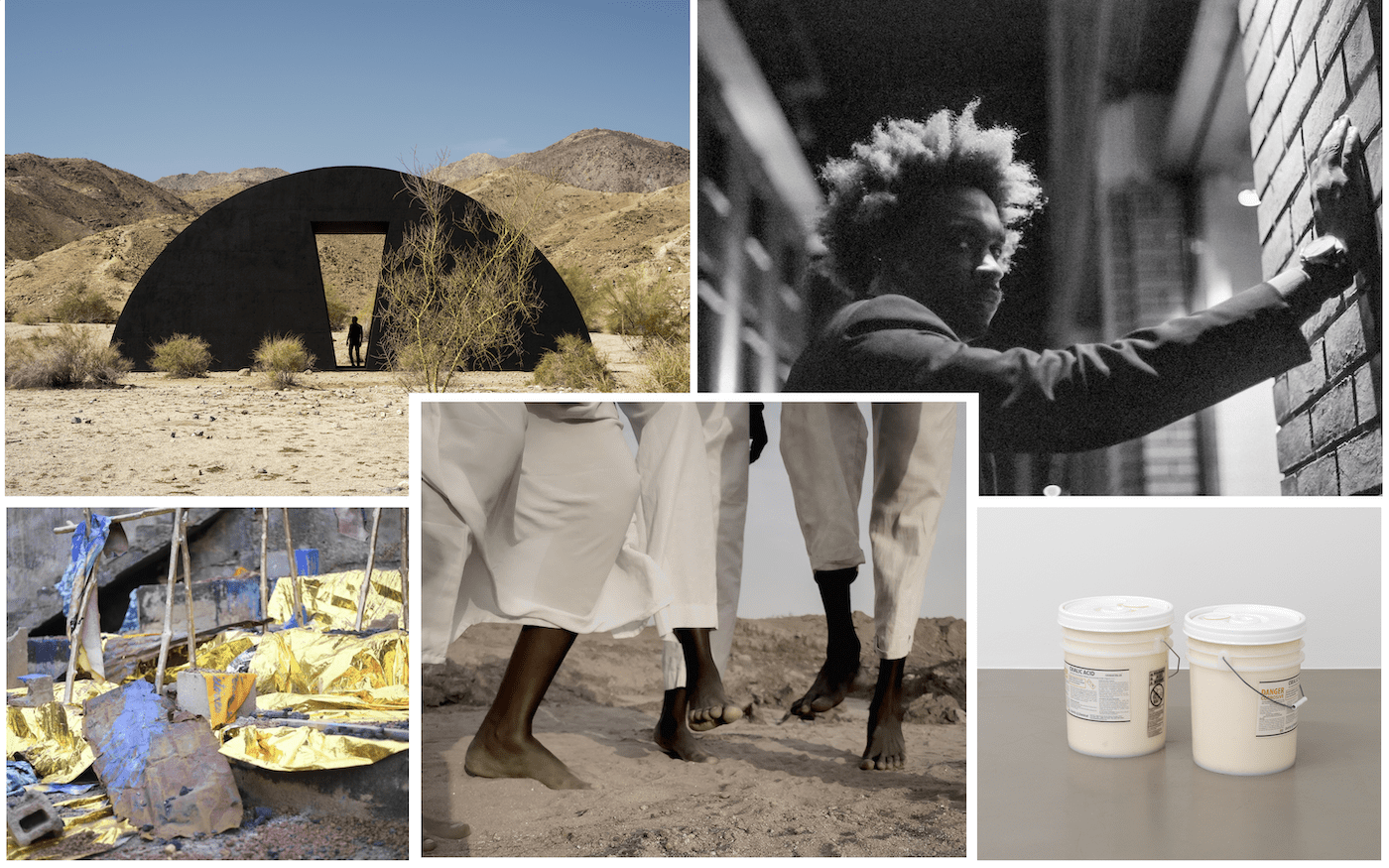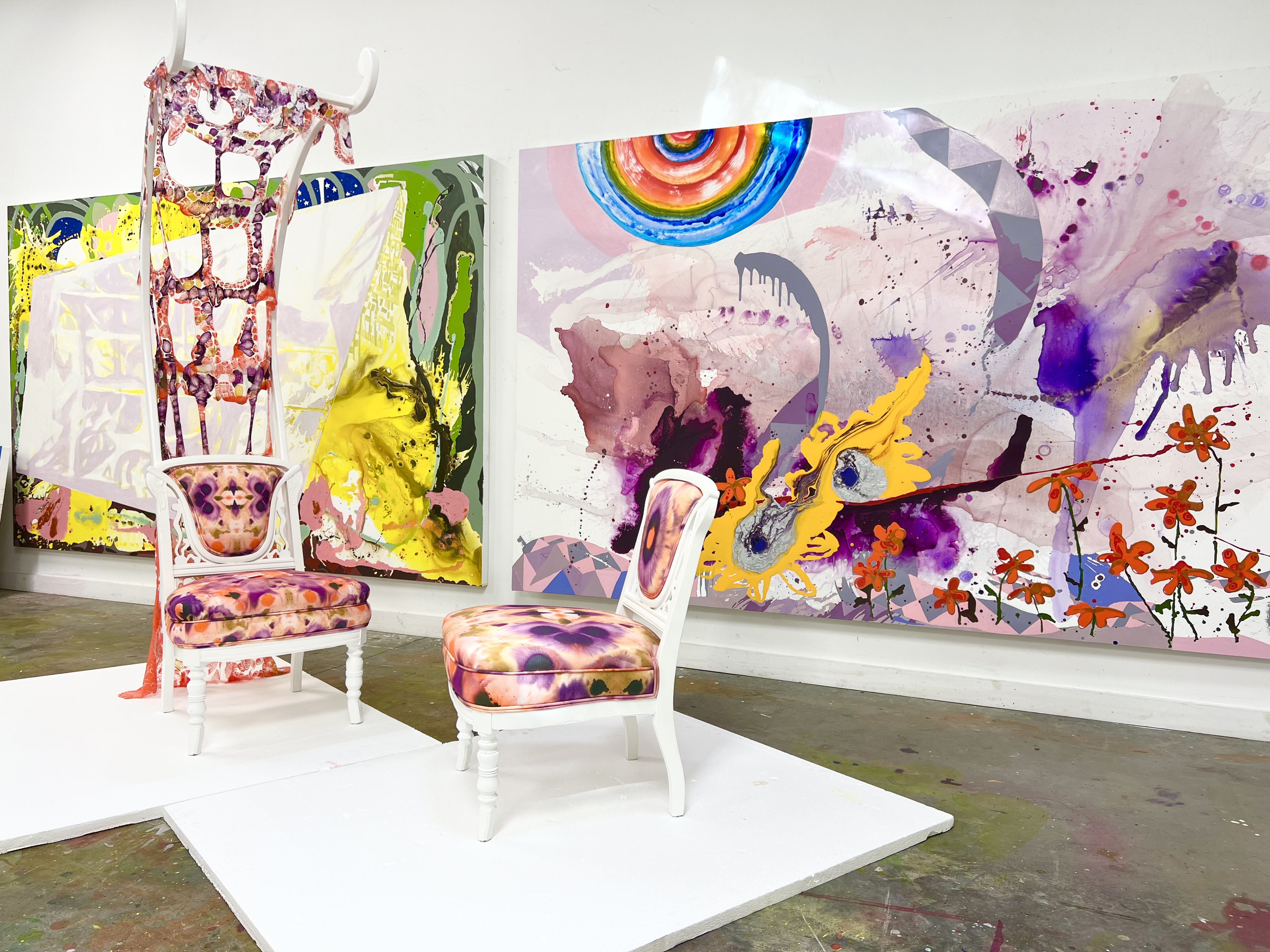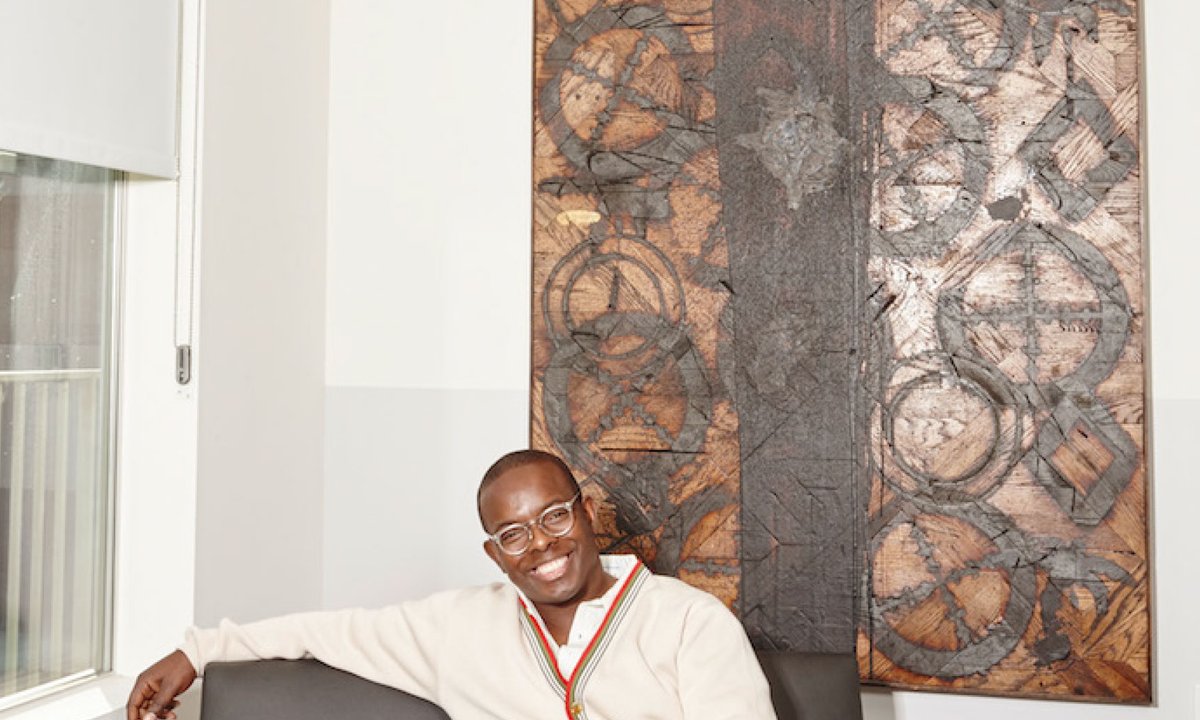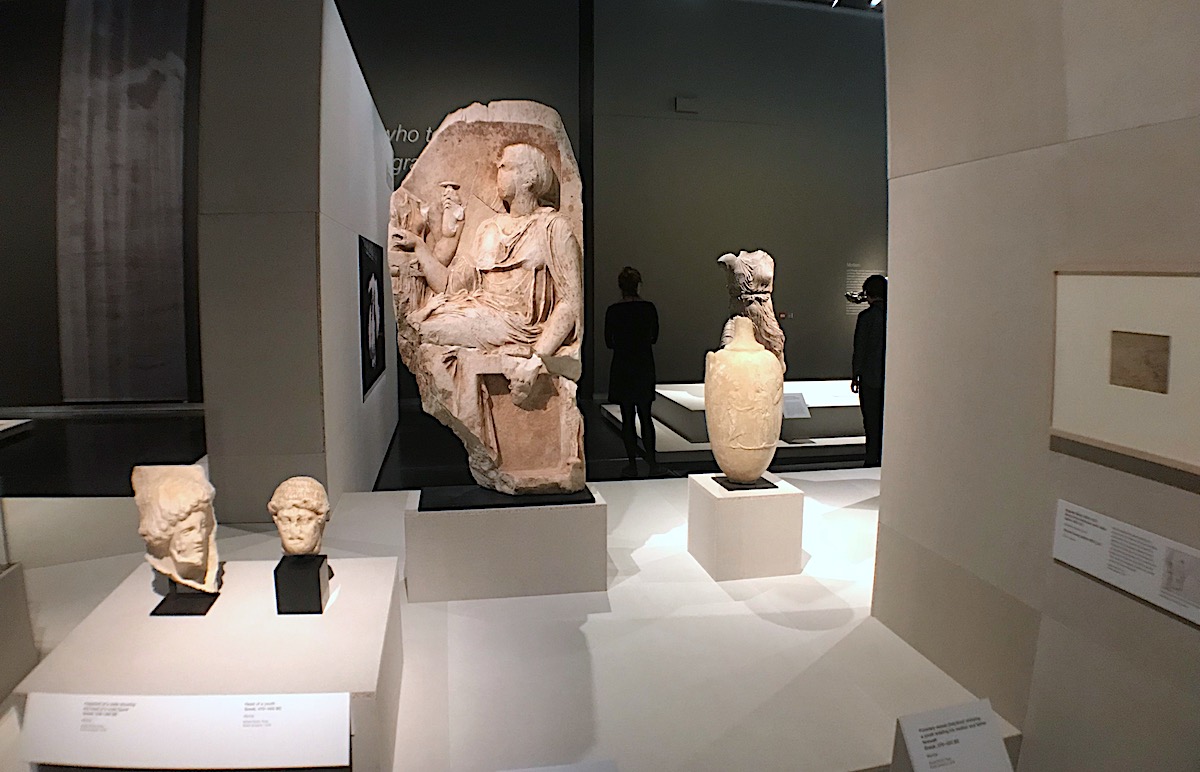Diagram XI and XII
2020 - Sculpture (Sculpture)
12 x 20 x 10 inches, 15 x 16 x 7 inches
Jes Fan
The Diagram series relates broadly both to Jes Fan’s interests in body modification and gender hacking as well as the artist’s investment in destabilizing hegemonic categories such as gender, monogamy, and the classical individuated subject in favor of more creative, egalitarian, and communal modes of envisioning ourselves. As a whole, the series consists of forms which originate from the bodies of Fan’s milieu of friends and collaborators in New York. Fan first creates a mould of a concrete anatomical feature on a specific body which captures their attention (for example: the pectorals or biceps). These moulds are used to cast the aforementioned anatomical forms in aqua resin, from which point Fan begins an intuitive process of composing a given sculpture by both abstracting from, duplicating, splitting, and working within its ready-made geometries. Diagram XI is derived from casts of the breasts of an ex-lover and Diagram XII is a cast of the nape of Fan’s friend’s neck which has then been rotated. The process itself is labor-intensive, involving long duration of hand-sanding and oiling of the surfaces. The resulting organic geometry and fluctuating joinery of these pieces evoke the permeable, semi-transparent layers of skin covering human bodies, tissues of internal organs or carapace of ocean creatures. In his deliberate openings and closings of skin-like waves, Fan questions where a body begins and ends. Intuitive craft and the idea of touching are of prime importance here; the works both invite touch and evidence the accumulated result of it. The blown glass elements, which Fan has been working with since very early in their career, are meant to be cradled and/or held by the aqua resin forms without the use of any adhesive in reference to non-normative models of symbiosis, co-existence, or care.
Jes Fan is a Brooklyn-based artist born in Canada and raised in Hong Kong. Speculating on the intersection of biology and identity, his trans-disciplinary practice emerges from a sustained inquiry into the concept of otherness as it relates to the materiality of the gendered body. Working primarily in expanded sculpture, Fan often incorporates organic materials—such as soybeans and depo-testosterone into larger assemblages fashioned of welded steel, poured resin, and hand-blown glass. His projects have focused on the bio-politics of transgender identity and the slippery nature of embodiment in an ear where HRT (hormone replacement therapy) and less extreme body-modification tactics such as bodybuiling are easily accessible, allowing the subject to mode their external body to match their internal state. Fan’s recent research has explored the complex and porous systems formed between biological agents (including those existing in our own body) and the surrounding environment, seeking to queer the traditional hierarchy between organic and inorganic matter.
Colors:
Related works sharing similar palette

© » KADIST
Zhang Kechun
2011Zhang Kechun’s photographic series The Yellow River documents the effects of modernization along the eponymous Yellow River, the second longest in Asia...

© » ARTFORUM
Expo Chicago Announces Participants for 2024 Edition – Artforum Read Next: RUTH FOUNDATION FOR THE ARTS NAMES WINNERS OF INAUGURAL $100,000 RUTH AWARDS Subscribe Search Icon Search Icon Search for: Search Icon Search for: Follow Us facebook twitter instagram youtube Alerts & Newsletters Email address to subscribe to newsletter...

© » KADIST
Pedro Reyes
2005In Reyes’s words, “We should be able to extract the technological nutrients before we excrete our waste...

© » KADIST
Marc Nagtzaam
2014Nagtzaam’s medium is drawing and his repertory of forms varies from abstract hard-edge and wall drawing to the reproduction of written material that he collects from art magazines...

© » CONTEMPORARYAND
C& Magazine’s Highlights of 2023 You Might Want to Read Again | Contemporary And search for something search C& AMÉRICA LATINA EN FR MEMBERSHIP EN FR Editorial All Editorial Features Installation Views Inside the Library Interviews News Opinions Events All Events Art Fairs Conferences Exhibitions Festivals Performances Screenings Talks / Workshops C& Projects C& Artists’ Editions C& Commissions C& Center of Unfinished Business Show me your shelves! C& Education Mentoring Program Critical Writing Workshops Lectures / Seminars Membership Opportunities Print C& Audio Archive On Tour Places Explore IN CONVERSATION INSTALLATION VIEW WE GOT ISSUES DETOX LABORATORY OF SOLIDARITY CONSCIOUS CODES CURRICULUM OF CONNECTIONS LOVE ACTUALLY OVER THE RADAR BLACK CULTURES MATTER INSIDE THE LIBRARY LOOKING BACK Follow About Contact Newsletter Advertise Imprint Data protection Membership Contemporary And (C&) is funded by: Editorial All Editorial Features Installation Views Inside the Library Interviews News Opinions Events All Events Art Fairs Conferences Exhibitions Festivals Performances Screenings Talks / Workshops C& Projects C& Artists’ Editions C& Commissions C& Center of Unfinished Business Show me your shelves! C& Education Mentoring Program Critical Writing Workshops Lectures / Seminars Membership Opportunities Print C& Audio Archive On Tour Places Explore IN CONVERSATION INSTALLATION VIEW WE GOT ISSUES DETOX LABORATORY OF SOLIDARITY CONSCIOUS CODES CURRICULUM OF CONNECTIONS LOVE ACTUALLY OVER THE RADAR BLACK CULTURES MATTER INSIDE THE LIBRARY LOOKING BACK GO TO C& AMÉRICA LATINA About Contact Newsletter Advertise Imprint Data protection Membership Best of 2023 C& Magazine’s Highlights of 2023 You Might Want to Read Again From climate colonialism to new perspectives from queer artists in Mozambique, these are some of our most-read articles this year...

© » KADIST
Pablo Rasgado
2011Pablo Rasgado’s paintings and installations serve as a visual record of contemporary urban human behavior...

© » SLASH PARIS
Porter notre part de la nuit — MAC VAL Musée d'art contemporain du Val-de-Marne — Exhibition — Slash Paris Login Newsletter Twitter Facebook Porter notre part de la nuit — MAC VAL Musée d'art contemporain du Val-de-Marne — Exhibition — Slash Paris English Français Home Events Artists Venues Magazine Videos Back Previous Next Porter notre part de la nuit Exhibition Mixed media Thu-Van Tran, Novel Without a Title #2, série Novel Without a Title , 2019 Bronze, patine chimique et rehauts colorés — 20 × 167 × 20 cm Collection MAC VAL — Musée d’art contemporain du Val-de-Marne — Acquis avec la participation du FRAM Île-de-France...

© » KADIST
Dale Harding
2018Dale Harding’s installation Body of Objects consists of eleven sculptural works that the artist based on imagery found at sandstone sites across Carnarvon Gorge in Central Queensland...

© » KADIST
Until It Makes Sense October 15 – December 11, 2011 With: Saâdane Afif – Yto Barrada – Matti Braun – Matthew Buckingham – Peter Friedl – Mario Garcia Torres – Pratchaya Phinthong – Walid Raad Curator: Jean-Marc Prevost The exhibition gathers an ensemble of works from the Kadist collection which remain open to suspensions and to shifts in meaning...











